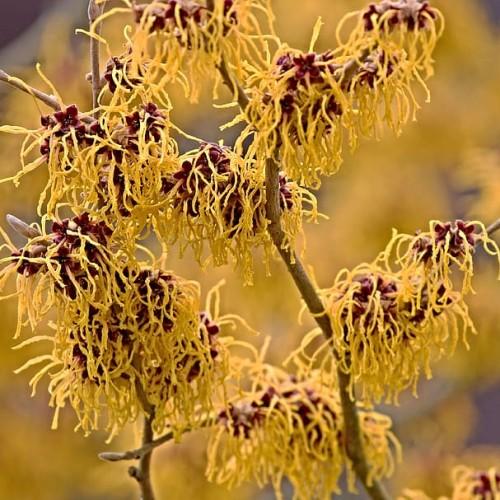
witch hazel
Hamamelis intermedia 'Orange Beauty'
Cycle:
Perennial
Watering:
Average
Hardiness Zone:
5 - 8
Flowers:
Flowers
Sun:
Full sun,part shade
Leaf:
Yes
Growth Rate:
Low
Maintenance:
Low
Drought Tolerant:
Yes
watering
Water newly planted witch hazel with copious amounts of water. This should be done during its first growing season. After that, water once a week in hot and dry periods. Spread mulch around the shrub to help retain moisture and prevent weeds. Be careful not to overwater witch hazel as it could lead to root rot. Don't fertilize once planted, but a fertilizer with balanced amounts of potassium, phosphorus and nitrogen can be applied in prescribed amounts once a year.
sunlight
Witch hazel (Hamamelis intermedia 'Orange Beauty') needs sun for at least 6 hours a day for optimal growth. It can do well in either full sun or partial shade but full sun helps bring out the intense colors of the flowers and foliage. This plant does best in areas with bright, morning sunlight and protection from excessively hot afternoon sunshine. The more sun the witch hazel will receive, the more vibrant the flowers and foliage will be.
pruning
Witch hazel should be pruned annually in late winter or early spring while the plant is still dormant. Prune dead wood to the ground, and prune back damaged or overly long branches. Remove crossing branches and any branches that are rubbing against each other. Leave the natural shape and main structure of the plant intact. To maintain the shrub’s size, remove up to 1-third of the longest branches.
